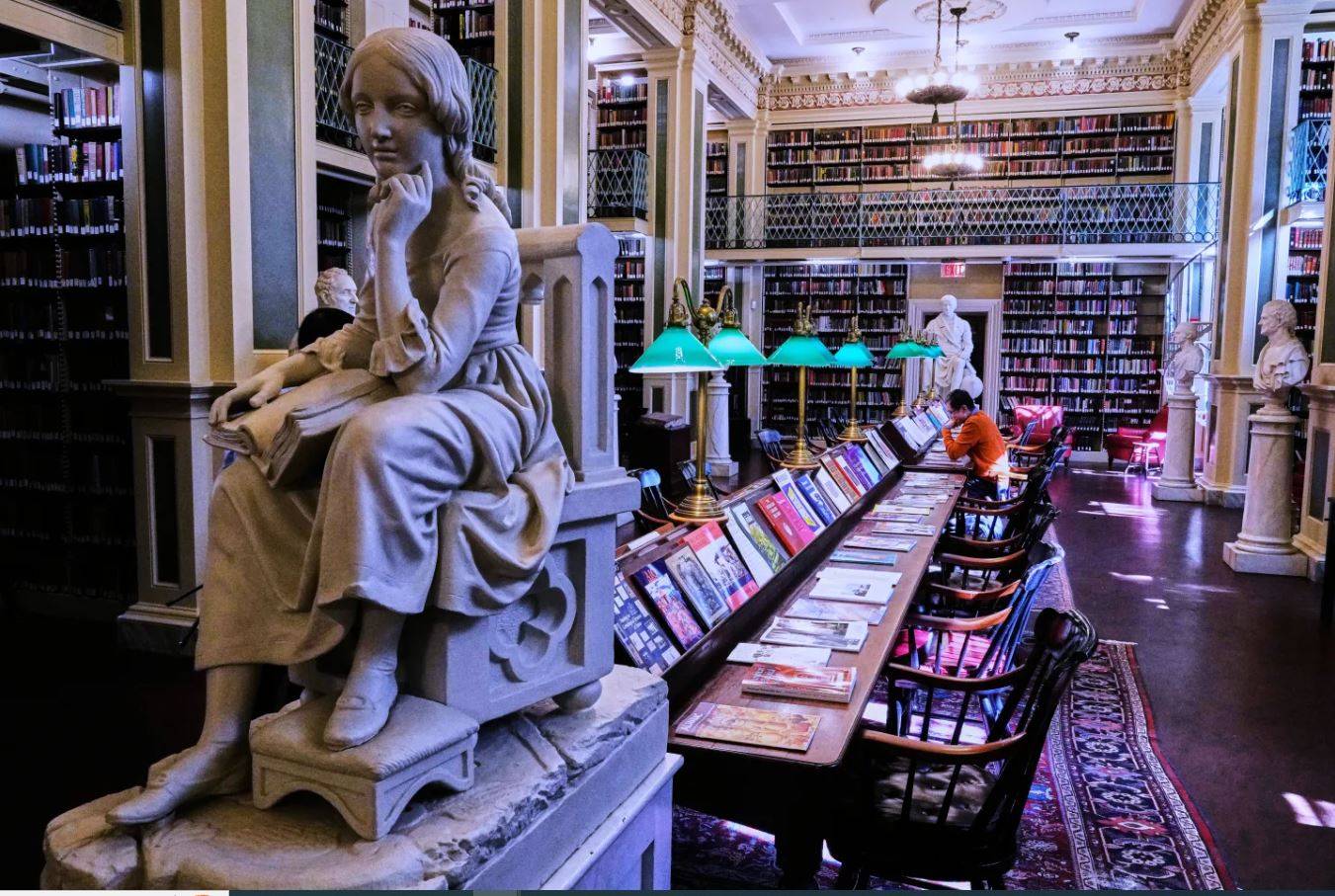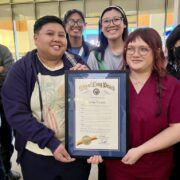New England’s modern comfort: Historic libraries

BOSTON—When David Arsenault takes down a worn, leather-bound 19th-century book from the winding shelves of the Boston Athenaeum, he feels a sense of awe—like he’s handling a museum artifact.
Many of the half a million books that line the library’s seemingly endless maze of shelves and stacks were printed before his great-great-grandparents were born. Among fraying copies of Charles Dickens novels, Civil War-era biographies and town genealogies, everything has a history and a heartbeat.
Vibrant place
“It almost feels like you shouldn’t be able to take the books out of the building, it feels so special,” said Arsenault, who visits the institution adjacent to Boston Common a few times a week.
The more than 200-year-old institution is one of only about 20 member-supported private libraries in the United States, dating back to the 18th and 19th centuries.
Athenaeums, a Greek word meaning “temple of Athena,” predates the traditional public library most Americans recognize today.
They were built by merchants, doctors, writers, lawyers and ministers who wanted to not only create institutions for reading—then an expensive and difficult-to-access hobby—but also a space to explore culture and debate.
Many athenaeums still play a vibrant role in their communities, as patrons gather to play games, join discussions on James Joyce or even research family history.
‘Old-fashioned reading’
Others visit to explore some of the nation’s most prized artifacts, such as the largest collection from George Washington’s personal library at the Boston Athenaeum.
One thing binds all athenaeums together—books and people who love them.
“The whole institution is built around housing the books,” said Matt Burriesci, executive director of Providence Athenaeum in Rhode Island. “The people who come … really appreciate just holding a book in their hands and reading it the old-fashioned way.”
Staffers at the Providence Athenaeum often talk about the joy of watching people enter for the first time. A thick wooden entrance door ushers them into a warm world filled with cozy reading nooks, hidden desks to leave secret messages to fellow patrons—and almost every square inch bursting with books.
‘Best kept secret’
“It’s the actual time capsule of people’s reading habits over 200 years,” Burriesci said, while pointing to a first edition of “Little Women,” where the pages and spine proudly showcase years of being read.
Once exclusive spaces that only people with education and money could access, athenaeums are now free. Most are open to the public for day passes and tours.

















